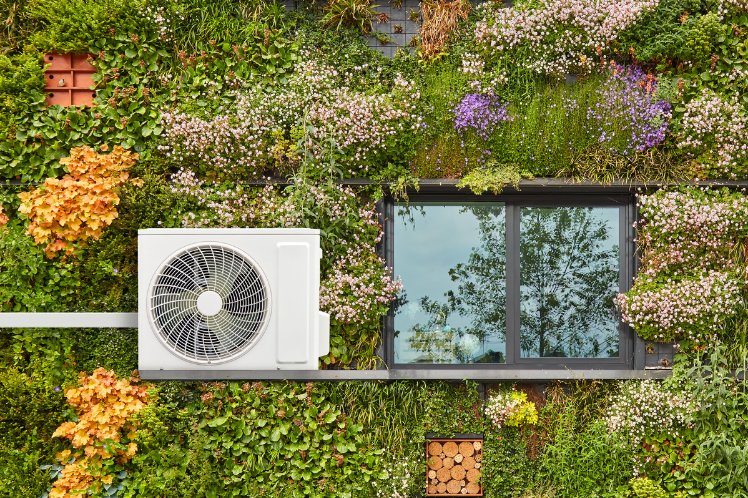
Currently, in the UK, electricity costs much more than gas. The costs are rather ridiculous because the price of gas is actually used to help set the price of electricity and a lot of taxes are charged on electricity rather than gas. Historically, this made sense, as gas power stations generated much of our electricity. However, today, more and more of our electricity comes from renewable sources. So why does electricity still cost so much more? Because the government adds a much bigger levy for “policy costs” to electricity compared to gas.
When thinking about sustainability, this is very unhelpful. We would clearly prefer to strongly motivate people to switch to electric-powered heating and hot water if that electricity comes from renewable sources. In the best cases, these might be heat pumps and solar panels, with electricity just used to pump rather than generate the heat.
But right now we’re not in that situation. Electricity costs a lot, and not all of our properties can have heat pumps or solar panels - especially in apartments. If we decide that gas is also not an option (the dwelling has no gas supply, or we feel that gas boilers are too expensive to maintain and are unsustainable) then we’re left with a stark reality: expensive electric heating and hot water.
Traditional Electric Heating: Why It’s Inefficient and Costly
Traditionally in an electric-only property in the UK, the answer was simple. Storage heaters for warmth and an electric hot water cylinder for the hot water supply. Typically on an “Economy 7” tariff, the massive radiators heat up at night using slightly cheaper power (although daytime power can be more expensive). Within the chunky radiators are bricks. Yes, bricks. These become hot overnight and then in the morning when electric power is cut off, they slowly release the stored heat. You might be able to open or shut vents on the top to “boost” the heat, but in reality, you’re just feeling hot bricks. Likewise, the hot water is typically heated at night to save costs. Ideally, the tank of hot water (usually in an airing cupboard) will be in a fat insulated jacket to keep the heat in.
What’s it like living with such a setup? Quite inconvenient. Years ago I lived in exactly such an apartment – the first property I ever bought. The hot water is lovely in the morning and quite chilly in the evening. If the hot water tank is used for a shower then there will be no water pressure as the tank is often at the same level as the bathroom, so you need an electric pump to boost it – which will go wrong every so often leaving you with just a trickle. The heating becomes ever nicer as the night wears on, and quite good in the mornings. But evenings are cold as those bricks have lost their heat. Even worse, because of the delay as the heaters must recharge overnight, if there’s a cold snap you have to ensure you turn up the heaters quickly or you are freezing for a whole day. And if it’s suddenly a warm day you can’t just turn them off – those hot bricks are just going to release heat whether you want it or not. It’s not central heating – there are no thermostats to control the radiators. You have to adjust each one individually. And to put the cherry on top – it all costs a fortune. You pay double or triple the electricity costs for substandard results.
Thousands of properties in the UK still use this setup. Thousands of landlords have properties exactly like this. The EPCs of such properties are not good. So everyone suffers.
What can we do? Thankfully there are several interesting alternatives today. For the hot water, you can buy far more efficient hot water cylinders with better insulation to keep the water hot. Newer products are called “heat batteries” which act like contemporary storage heaters, only they transfer their heat to water. You can also buy on-demand electrical boilers that only heat the water when the tap is turned on – a clever, much more compact, and much more efficient system (you just have to accept that the first few seconds will be cold water until the boiler kicks in).
Modern Electric Heating Solutions for Efficiency and Comfort
For heating, there are now much better alternatives. The simplest is to swap older storage heaters with modern equivalents. Today you can get Wi-Fi-enabled highly efficient storage heaters that give you the benefits of central control, thermostats, and more efficient heat storage and emission, cutting bills by half. But there are a range of newer more efficient alternatives as well. There are slimline radiators that emit heat and charge themselves simultaneously, enabling much more efficient heating, Or you can have oil-filled electric radiators for that classic look, Or the ultimate in slimline, position-anywhere radiators, there are the highly efficient infrared panels.

Believe it or not, you can even have traditional water-based radiators with an electric boiler. This was the solution I had installed in my own apartment, 20 years ago (I was ahead of the times). A normal feed and expansion tank in the loft for a standard set of pumped water-filled radiators, all centrally controlled with a digital thermostat. The electric boiler was a highly compact unit that heated the water, small enough to fit in the same small space as the hot water cylinder, with the advantage of no flue, no annual maintenance, and long life as there are very few components.
All of these modern replacements for storage heaters should improve the EPC rating of the property. And once we have electric heating and hot water, if you have a nearby roof then solar panels can help reduce those costs and improve the EPC even more.
We may not be able to change the way our electricity is charged but by using these efficient forms of electric hot water and heating, we can make a real difference to our bills and have far more comfortable homes. You don’t have to do everything at once, but making these changes will future-proof the property and increase its value. Because one day gas simply won’t be an option.


